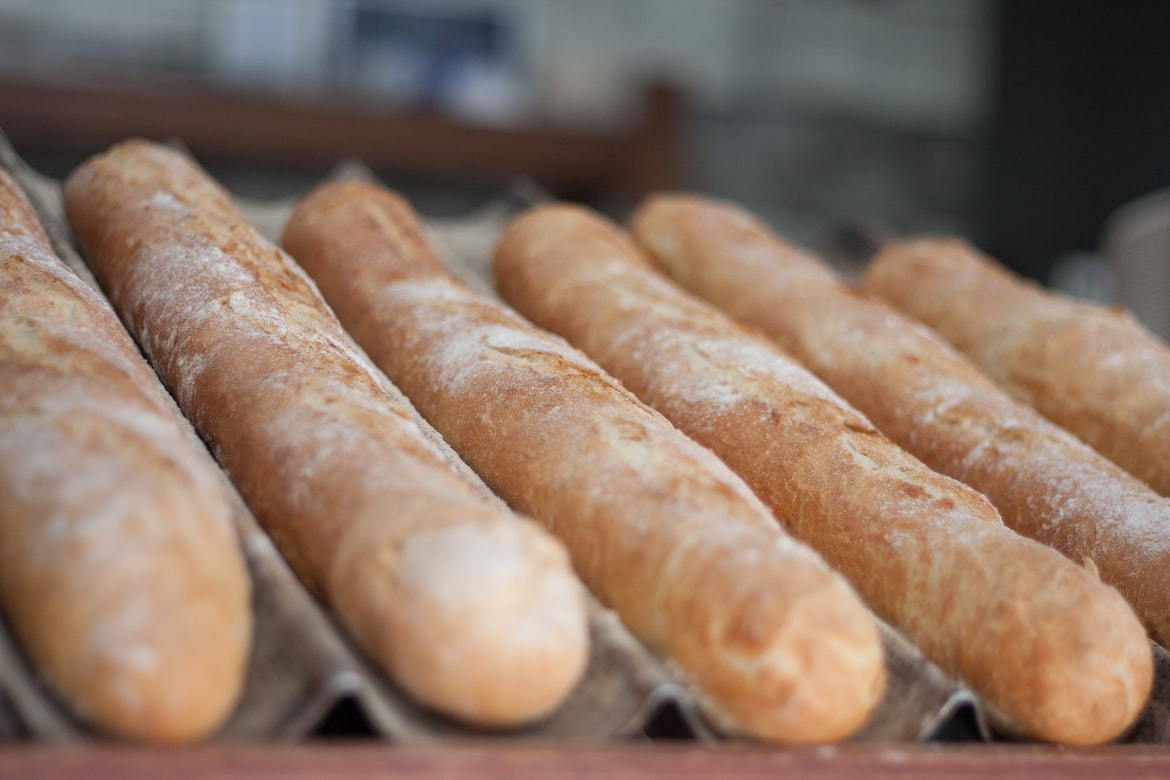The beloved French baguette has a storied history that dates back to the early 20th century. Its unmistakable shape and texture have made it an iconic bread type recognized across the world.
French baguettes are often characterized by their crispy crust, soft interior, and chewy texture that leaves you wanting more. They come in a variety of types, each with its unique twist and taste.
In this article, we’ll take a closer look at the different types of French baguettes and what makes them stand out.
French baguettes are the staple of the French diet, and it’s no surprise that they’ve grown in popularity around the world. As a result, bakers worldwide have put their spin on the classic French baguette, incorporating different ingredients and shapes.
These unique takes have created a wide range of baguette varieties, each with its unique charm. What makes French baguette different from other bread types is how lightly they’re packed with yeast, giving them their distinct crust and airy crumb.
Traditional French Baguette:
A traditional French baguette is made of just four ingredients: flour, water, yeast, and salt. The process of making a traditional French Baguette entails using a high protein flour to create a dough that develops texture and elasticity.
After the dough has risen, the baker shapes the dough into the iconic long and skinny form of a baguette. Bakers often use pre-ferments to give the dough additional flavor, which results in a crispy crust and a soft, light interior.
Whole Wheat French Baguette:
A whole wheat French baguette is a healthier twist on the traditional French Baguette. It typically involves replacing about 25% of the high protein flour with whole wheat flour, which gives the bread a more substantial texture and a nutty flavor.
Incorporating whole wheat flour also makes the baguette more nutritious and fiber-rich. The process of baking a whole wheat French baguette is not much different from making a traditional French baguette.
Rye French Baguette:
Rye flour is another ingredient that bakers use to create different baguette variations. Rye flour has a bolder flavor than wheat flour and is also substantial and nutritious.
The recipe for rye flour baguette involves mixing high protein flour and rye flour for a unique flavor profile. The process of shaping and baking the baguette remains similar, but rye flour modifications make the baguette denser with a distinctive texture.
Multi-grain French Baguette:
Multigrain French Baguettes are an excellent option for those looking for healthier bread. They feature numerous grains such as wheat, barley, oats, and flaxseed that add extra fiber, vitamins, and minerals to the bread.
Baking multigrain French baguettes requires a modification of the recipe, and the baker must exercise significant skill to balance the texture of the flour mixture.
Cheese French Baguette:
Cheese lovers can indulge in this cheesy version of the French baguette, where the dough is mixed with cheese to create a sumptuous bread. There are several cheeses that can be baked into the dough, such as cheddar, parmesan, and brie.
Bakers carefully mix and add the cheese before baking to ensure the cheese spreads throughout the bread. The result is a savory and rich baguette perfect for a cheese and bread platter.
Sweet French Baguette:
A twist on the classic French baguette, sweet French baguettes are made with added sugar or honey, which gives the bread a sweet taste. The recipe variation uses high protein flour mixed with sugar or honey and baking the bread to crusty crumbly delivery.
Sweet French baguettes are perfect for a morning snack or as a complement to a cup of tea.
Long French Baguette:
The long French baguette is the classic slim shape baked to perfection. It can be up to two feet in length and is perfect for sharing among a group of friends or family.
The recipe to create a long French baguette is similar to that of the traditional French baguette, except the shaping and baking process involves elongating the dough to create the desired shape.
Mini French Baguette:
Mini French baguettes are a bite-sized version of their long counterparts, perfect for a fun snack or hors d’oeuvres. The recipe for mini French baguettes uses the standard recipe, but the shaping and baking process involve making bite-sized portions of the dough.
Serving Suggestions for French Baguette:
The crispy French baguette goes well with soups, sandwiches, and charcuterie boards. The classic French combination of baguette with cheese, wine, and fruits is always a winning choice.
Pairing the baguette with a fruity red wine will typically enhance the taste. In recent years, the baguette is also used to make sandwiches for a quick lunch or snack.
Conclusion
There are many variations of the French baguette that can delight anyone’s palate. Whether you’re looking for a healthier bread option, a savory twist with cheese, or a sweet treat, there’s a baguette type for everyone.
It’s a testament to the versatility and beauty of the French baguette that such small changes to the recipe can make such a significant difference in taste and texture. So next time you’re in a bakery, be adventurous and try out the different French baguette types. You just might discover your new favorite type.

